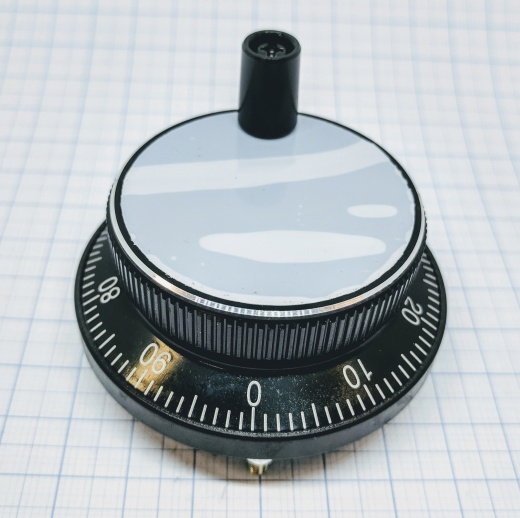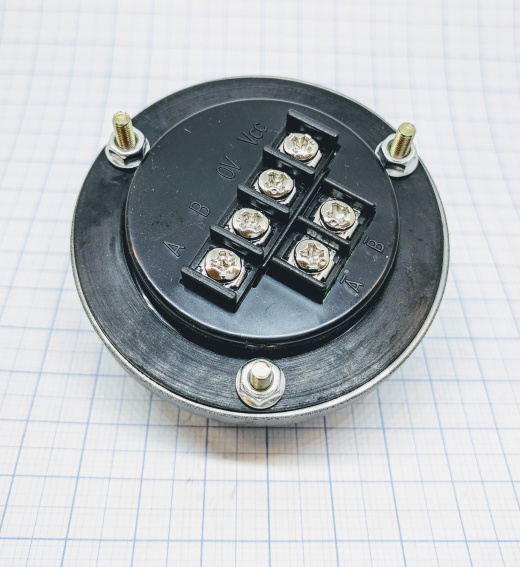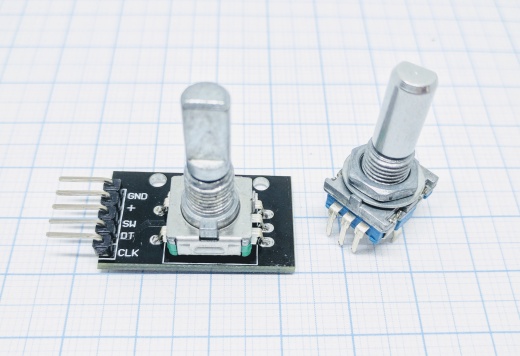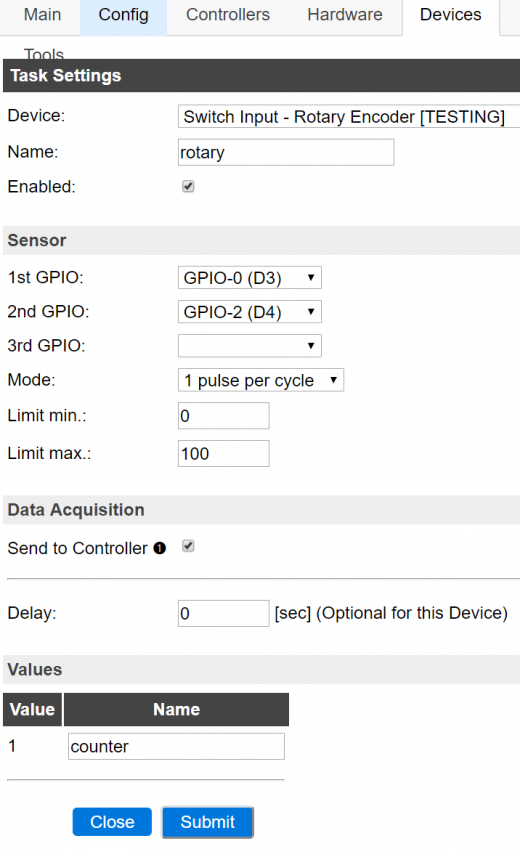Difference between revisions of "Rotary Encoder"
Grovkillen (talk | contribs) |
Grovkillen (talk | contribs) m (→Hardware) |
||
| Line 15: | Line 15: | ||
1st-GPIO -> A or CLK on the module (switch A/B if the encoder is counting backwards) | 1st-GPIO -> A or CLK on the module (switch A/B if the encoder is counting backwards) | ||
2nd-GPIO -> B or DT on the module (switch A/B if the encoder is counting backwards) | 2nd-GPIO -> B or DT on the module (switch A/B if the encoder is counting backwards) | ||
| − | 3rd-GPIO -> I on module (OPTIONAL if any available, used to "0" the | + | 3rd-GPIO -> I on module (OPTIONAL if any available, used to "0" the counter after each turn) |
3.3V to module VCC | 3.3V to module VCC | ||
GND to module GND/V0 | GND to module GND/V0 | ||
Revision as of 13:46, 19 July 2017
Introduction
A rotary encoder can be used in many applications that require precise (unlimited) rotation indication. A general use is to have the encoder set the volume of a speaker or position of a stepper motor.
A pulse wheel used for CNC machines.
A rotary encoder used for volume and GUI interaction (press the knob for switch input).
Hardware
1st-GPIO -> A or CLK on the module (switch A/B if the encoder is counting backwards) 2nd-GPIO -> B or DT on the module (switch A/B if the encoder is counting backwards) 3rd-GPIO -> I on module (OPTIONAL if any available, used to "0" the counter after each turn) 3.3V to module VCC GND to module GND/V0
A and B is sometimes labeled CLK and DT, other labels might also be used. Test and see what works for your encoder. If the rotary encoder have A- and B- ports it is ideal to use them since the pulses are negative and doesn't strain the ESP unit's power. Using a positive signal is not a problem though.
ESP Easy
Use the device tab on the ESP Easy web interface and create a new task by editing one of the available tasks. Select "Switch input - ..." from the drop down box. Max four rotary encoder devices can be used on the same ESP Easy unit. To enable the switch input (press the knob) you need to set this as a generic switch input and connect the "SW" pin with the GND.
Mode: sets the "resolution" of the turning on the knob. 1 pulse per cycle is "slowest"/finest and 4 pulses per cycle is the "fastest"/coarsest.
Limit min: is the lowest value that the counter will go to. Observe that if you have the counter on a value below this limit the counter will climb above this value but not below it once it has reached the min limit.
Limit max: is the highest value that the counter will go to. As with the min limit if the counter is above this limit it will descend to the max level but never climb over it once reached below it.



